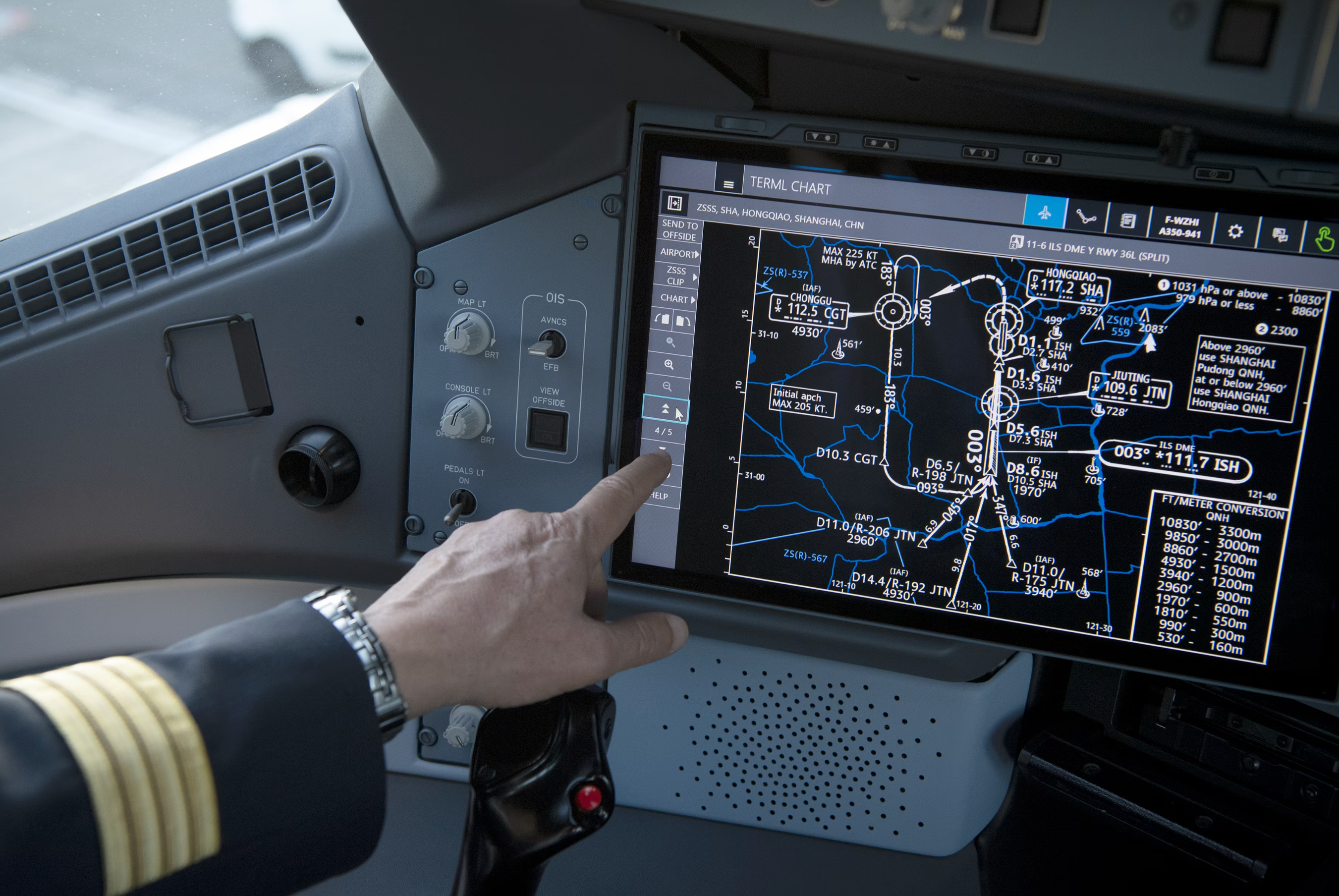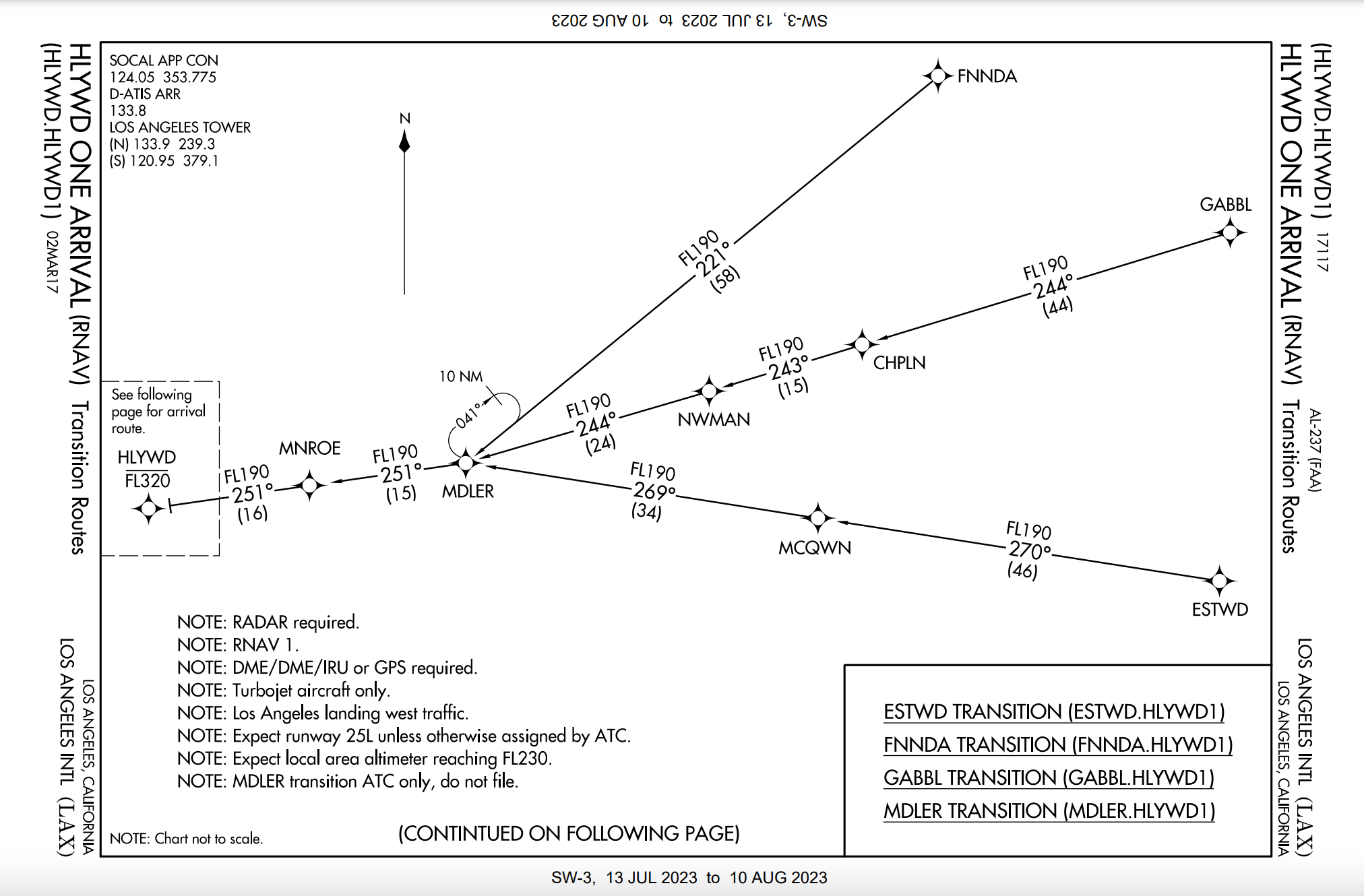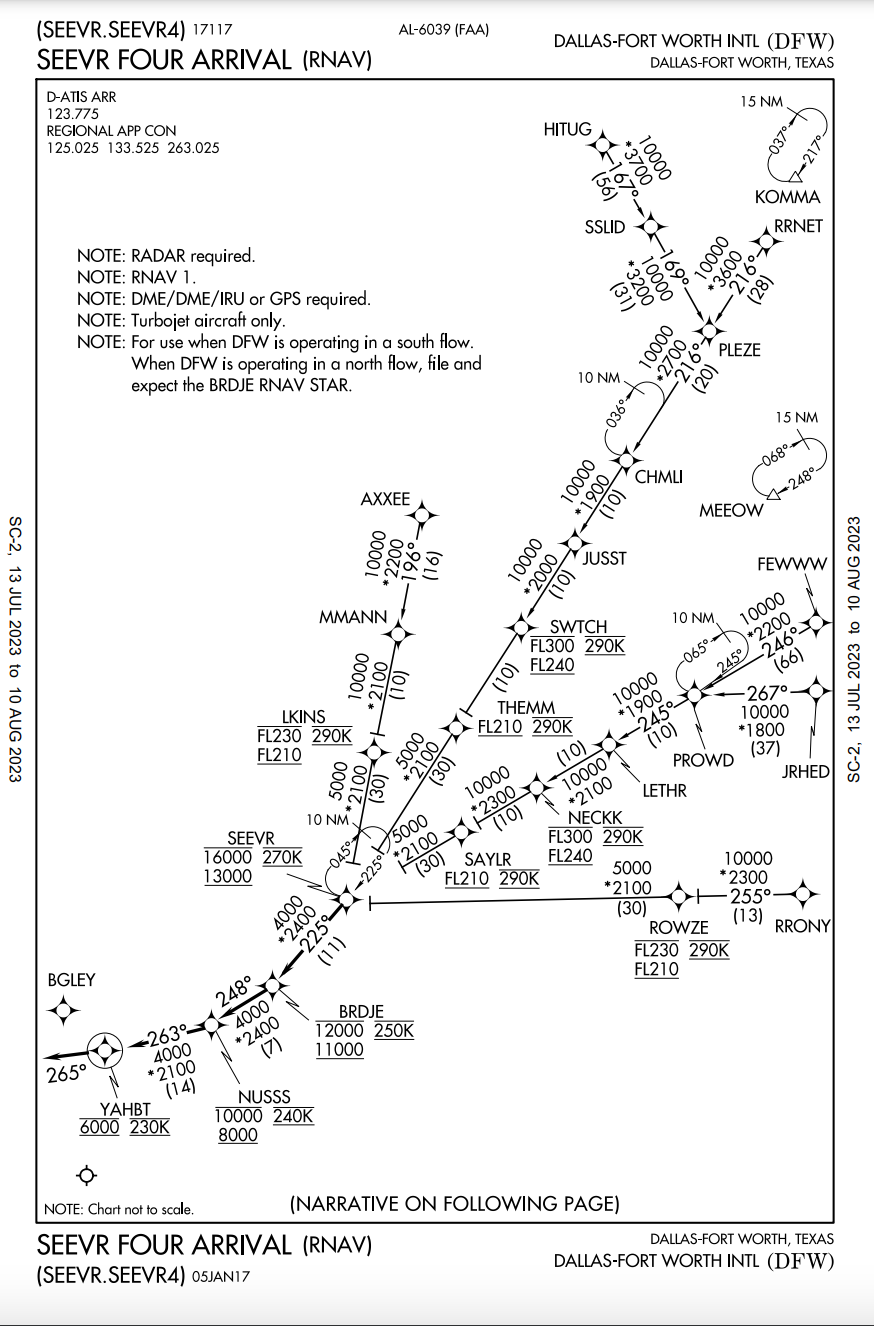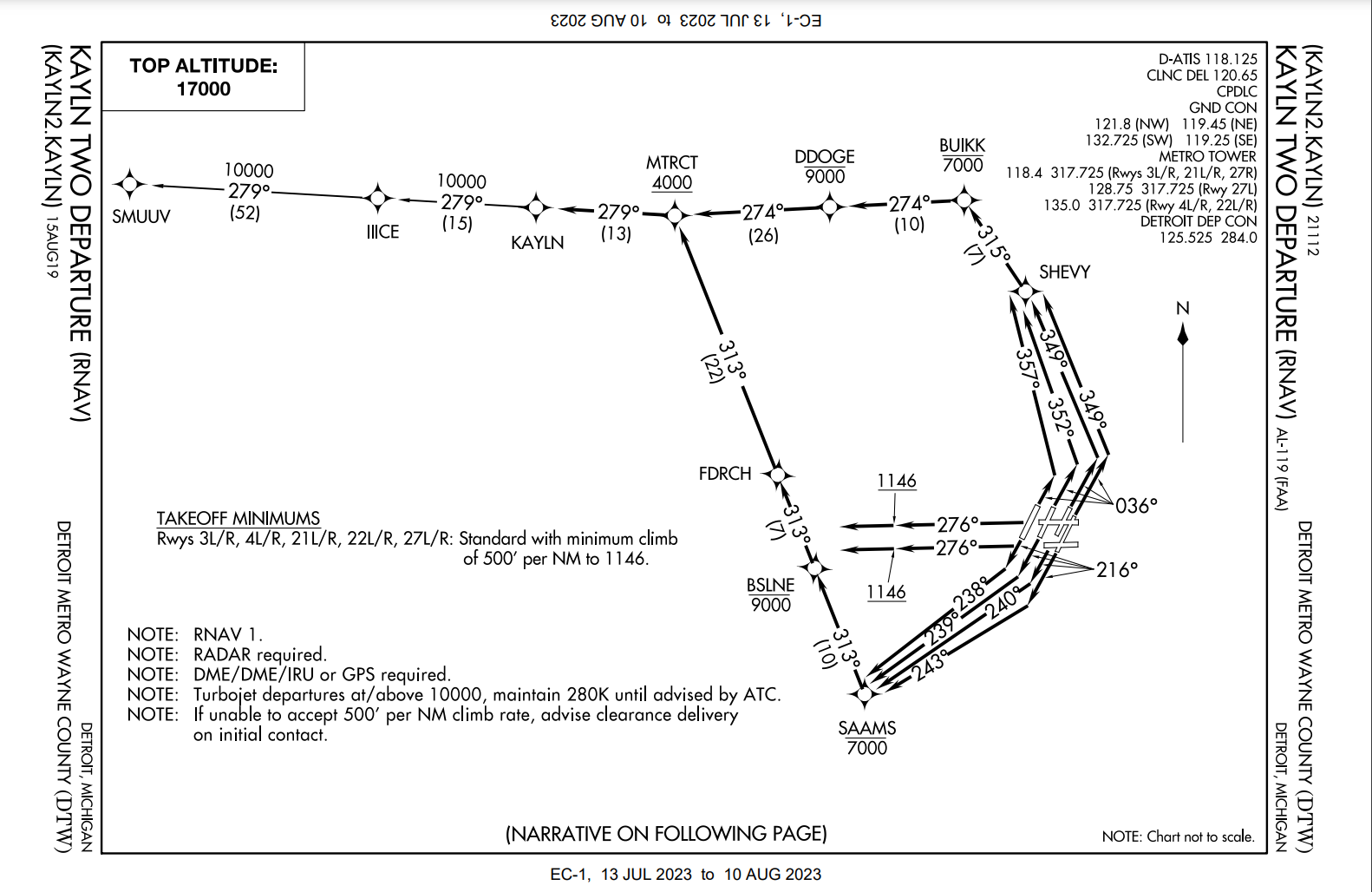Virtually every airliner built in the preceding three decades uses GPS as a primary means for navigating in flight. Pilots follow flight plans built by GPS waypoints, each one of them with a designated name. Numbers and letters designate some waypoints, while others are named to phonetically represent a word.
Departures and arrivals are unique because they provide a canvas for the unique naming of waypoints to form messages representing the airport or area they service. Particularly at large airports in the US, arrivals and departures enjoy colorful, funny, thought-provoking, and commemorative names assigned to their waypoints. Let's discuss these procedures and highlight a few of the best examples.
STARs and SIDs
Arrival and departure procedures exist at medium to large-sized airports around the world. More commonly referred to as STARs and SIDs (Standard Terminals Arrival & Standard Instrument Departure), these procedures have been around for the better part of two decades.
The idea underlying arrival and departure procedures is to enhance traffic efficiency by issuing fewer clearances (such as headings and altitudes). When airliners are told to "climb or descend via" a procedure, the pilots will follow every charted altitude and speed on their designated route. Terminal arrival controllers have can accordingly predict when planes will cross a waypoint.
Most STARs and SIDs have a coalescing waypoint, and this is the crux of the procedure's naming convention. Planes arriving from different "sectors" fly different transition routes that eventually come together at the waypoint for which the procedure is named. The above image is of the transitions for the "HLYWD1" STAR into Los Angeles Int'l.
The procedure's name is featured at the waypoint where the four transitions come together. Serving Los Angeles, the names of the five letter transitional waypoints are an homage to Hollywood actors Henry & Jane Fonda, Clint Eastwood, Clark Gable, and Bette Midler. Also included on the procedure are Paul Newman, Charlie Chaplin, Marilyn Monroe, and Steve McQueen.
Controllers are given the ability to name waypoints. Some procedures feature controllers' names, while others contain inside jokes. Take, for instance, the SEEVR4 arrival at Dallas/Fort Worth Int'l (pictured above). The RRNET transition features the consecutive waypoints PLEZE CHMLI JUSST SWTCH THEMM.
According to controllers, they had a colleague named Chumlee who worked this sector of airspace regularly. He was known to forget to give pilots a radio handoff to the next controller. His colleagues would have to call regularly to remind Chumlee to "switch" the arriving flights to the next frequency. As a tongue-in-cheek joke in his honor, these waypoints were integrated into the arrival.
Procedures aren't just named for people, but for things the area is known for. Take, for instance, the KAYLN2 SID from Detroit (above image). The waypoints SHEVY, BUIKK, and DDOGE are nods to the storied American automakers which had their geneses in Detroit. It's slightly less obvious, especially at first glance and taken out of context, that MTRCT should be pronounced "motor city."
So many waypoints!
Lots of airports have uniquely named procedures that pilots and controllers alike enjoy. Waypoints' names are tied to the city, people, environment, history, and so many other elements particular to their location. The amount of interesting waypoints could fill a lengthy book. Do you know of any SIDs or STARs with unique, funny, or quirky naming conventions? Share them in the comments!
Image Source: FAA




